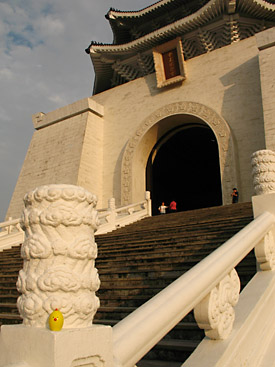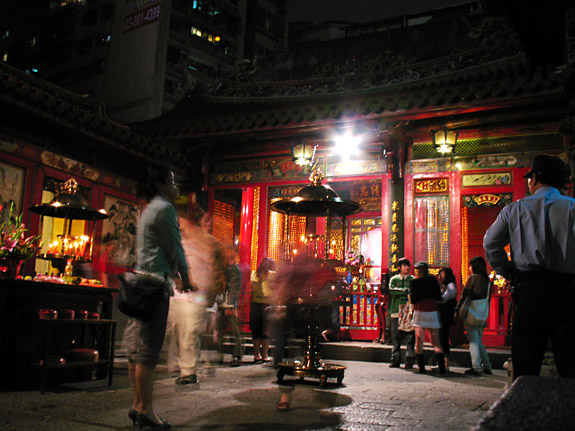Quick Tips & Getting Around
Do as much research as possible before heading to Taipei, including whatever directions you can find online. Study maps. Taipei receives few tourists, so there isn't a "gringo trail," so to speak. While the Metro features English signage, many streets and underground walkways do not.
 |
| CKS memorial, with our little chicken mascot |
Other sites of interest around town are the Chiang Kai-Shek Memorial (watch the EXCRUCIATINGLY slow changing of the guard!) and Taipei 101 (the highest building in the world—for now). For those who need a breather from the big city, Yangmingshan is a beautiful mountain park just outside Taipei, and former gold-mining town Jinguashi makes for a pleasant daytrip.
The major dialect in Taiwan is Mandarin. For short trips it's quite unnecessary to learn Taiwanese, but a few words of Mandarin would be appreciated!
Taipei is very safe for a large city. Traffic is a much bigger concern than crime, although things have greatly improved. My mom was proud to note that "now, drivers stop at the red lights and people rarely walk into the street unexpectedly anymore." It's the great leap forward.
GETTING AROUND
There is a movement afoot to make Taipei more "English friendly." Until that happens, transportation may be a bit of an adventure.Taxis are quite cheap, although taxi drivers are unlikely to speak English. Hotels should provide written directions in Chinese to present to the drivers. In my experience, the drivers are usually quite friendly and cabs are clean. Tipping is not mandatory.
Buses are simple for Chinese speakers, and perfectly comfortable—just like any bus in the US or Europe. They are incredibly cheap, about 50 cents per ride, but destination information is posted in Chinese only and drivers do not speak English.
The best chance to experience public transportation for non-Chinese speakers is the Metro. Signs are clearly printed in English in this bright, well-maintained system. Fares depend on distance, but unlimited-ride tickets are also available.

Beautiful Longshan Temple, a 200-year-old temple set in the middle of the modern city.